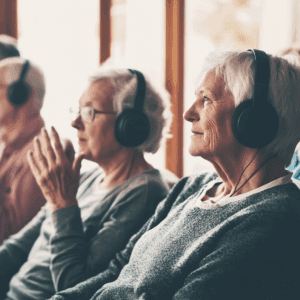Aging at home offers familiarity, dignity, and comfort - but it also requires the right support. Thanks to recent advances in smart home technology, independent living is safer and more achievable than ever.
From voice-controlled assistants to motion-sensitive lights and medication dispensers, today’s smart devices can reduce risks, simplify routines, and offer peace of mind for both seniors and their families.
Here’s a curated guide to some of the best smart home devices that support aging in place - with external product links and real-world use cases.
1. Smart Speakers and Voice Assistants
Ideal for: Reminders, communication, accessibility
Voice-controlled devices like the Amazon Echo Show or Google Nest Hub can serve as hands-free assistants for seniors. These devices help users:
- Set daily routines and medication reminders
- Call loved ones without needing to dial
- Control other smart devices via voice
- Get weather, news, or music on demand
👉 Check out our article on Tips for Helping Seniors Remember Appointments Without Nagging
2. Smart Lighting Systems
Ideal for: Preventing nighttime falls, supporting visual clarity
Smart lights that respond to motion or voice commands are an excellent way to keep homes well-lit and reduce fall risks - especially in hallways, bathrooms, and staircases.
Products like Philips Hue Motion Sensor Lights and Wyze Bulbs can:
- Automatically turn on when someone enters a room
- Be scheduled for dim or bright lighting based on time of day
- Reduce the need to fumble for light switches in the dark
3. Automated Medication Dispensers
Ideal for: Adherence, peace of mind, chronic conditions
Missing medications can have serious consequences. Automated dispensers ensure correct doses are taken at the right time, especially helpful for those managing complex regimens.
Devices like the Hero Medication Dispenser or MedMinder:
- Dispense pills at scheduled times
- Lock compartments to prevent double-dosing
- Alert caregivers if a dose is missed
👉 For tips and advice on Managing Medications for Seniors at Home
4. Smart Door Locks & Video Doorbells
Ideal for: Security, accessibility, remote family oversight
Smart locks allow seniors to open the door without needing keys and can be controlled by trusted family members remotely. Video doorbells offer added visibility for who's at the door, which is especially important for seniors living alone.
Top picks include:
- August Wi-Fi Smart Lock – control access via smartphone or voice
- Ring Video Doorbell 4 – two-way talk, motion alerts, and video history
5. Fall Detection Wearables
Ideal for: Emergency response, peace of mind, safety at home or outside
Wearables with fall detection can automatically alert emergency contacts or services if a fall occurs - critical for people who may not be able to call for help themselves.
Popular options include:
- Apple Watch SE with Fall Detection
- Lively Mobile Plus by Jitterbug – emergency button and GPS tracking
👉 Check out our article on Top Fall Prevention Tools for Seniors
6. Smart Thermostats
Ideal for: Climate control, energy efficiency, comfort
Seniors can be more vulnerable to extreme temperatures. Smart thermostats help maintain a safe and comfortable environment without manual adjustments.
Try:
- Google Nest Thermostat – learns temperature preferences and adapts
- ecobee Smart Thermostat – includes room sensors and voice control
7. Leak & Smoke Detectors
Ideal for: Home safety, risk prevention
Water damage and fire risks can be especially dangerous for older adults. Smart detectors send alerts to both the resident and caregivers’ phones.
- Flo by Moen – monitors for leaks and shuts off water
- Google Nest Protect – detects smoke and carbon monoxide
Smart home devices aren’t just about convenience - they’re about confidence, safety, and independence. The right setup allows seniors to live with fewer worries, and families to feel reassured from afar.
Whether it’s a voice assistant, automated lighting, or an emergency-ready watch, technology can gently fill the gaps while keeping loved ones in control of their lives.
The future of aging in place is already here - and it’s smart.








